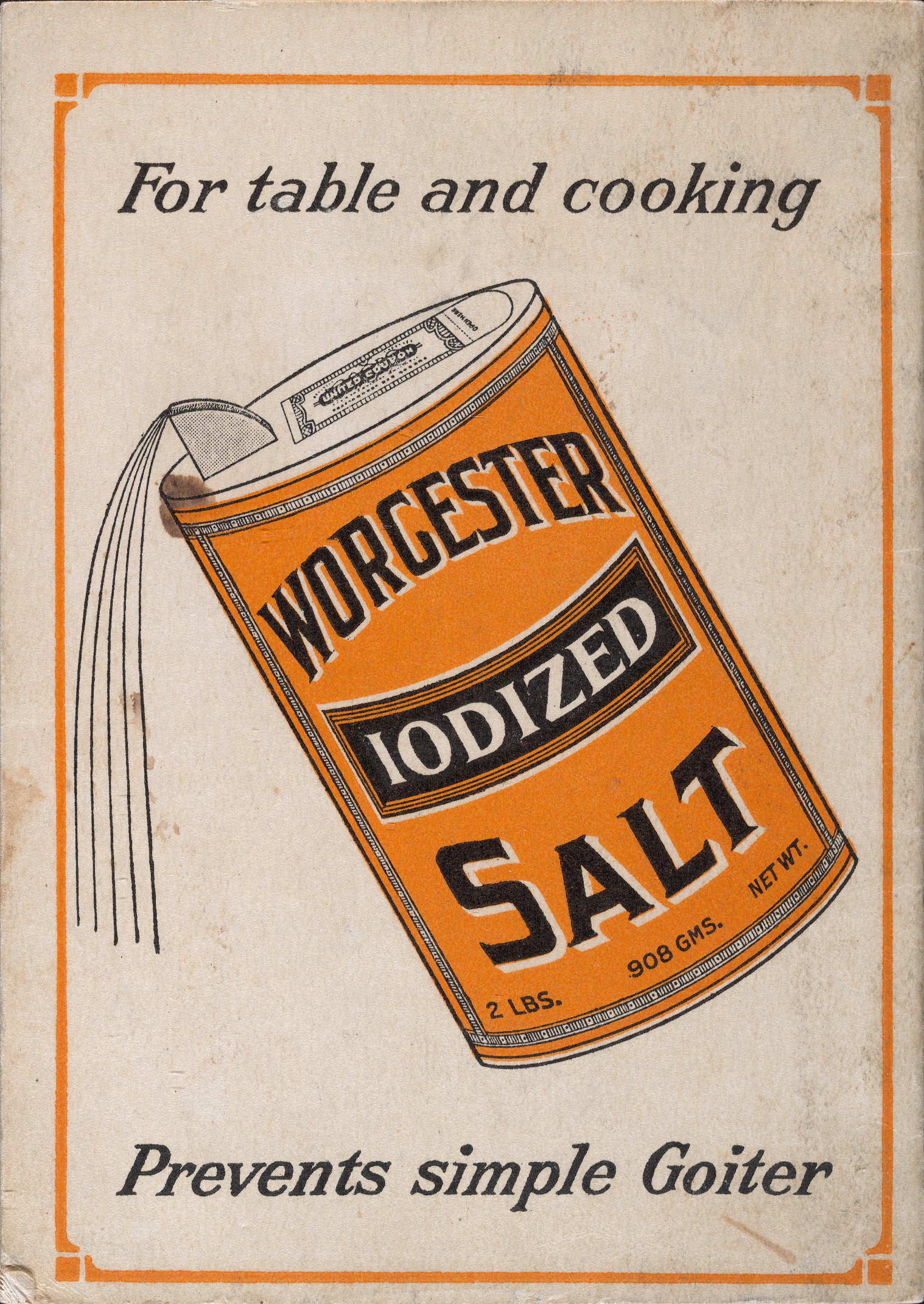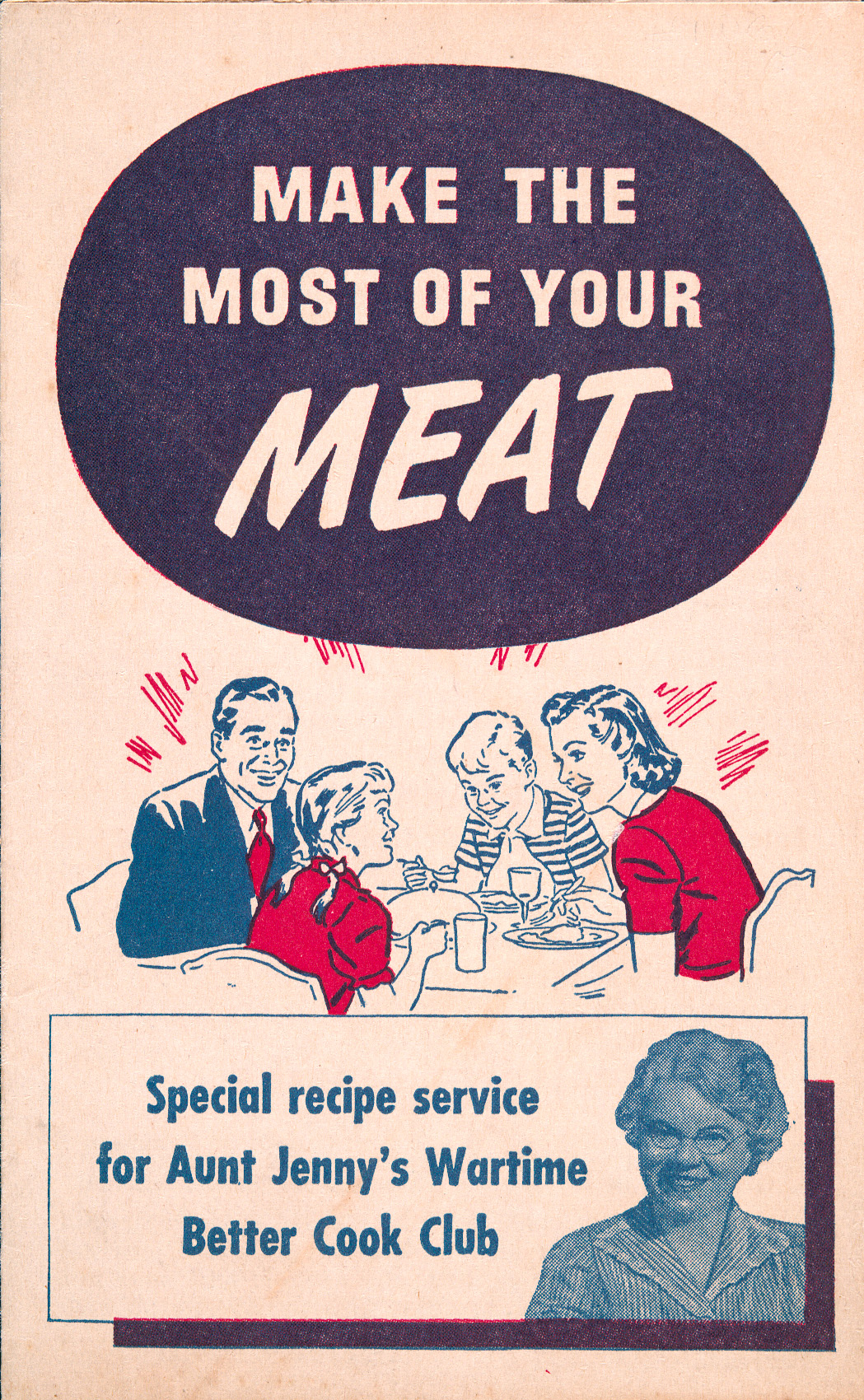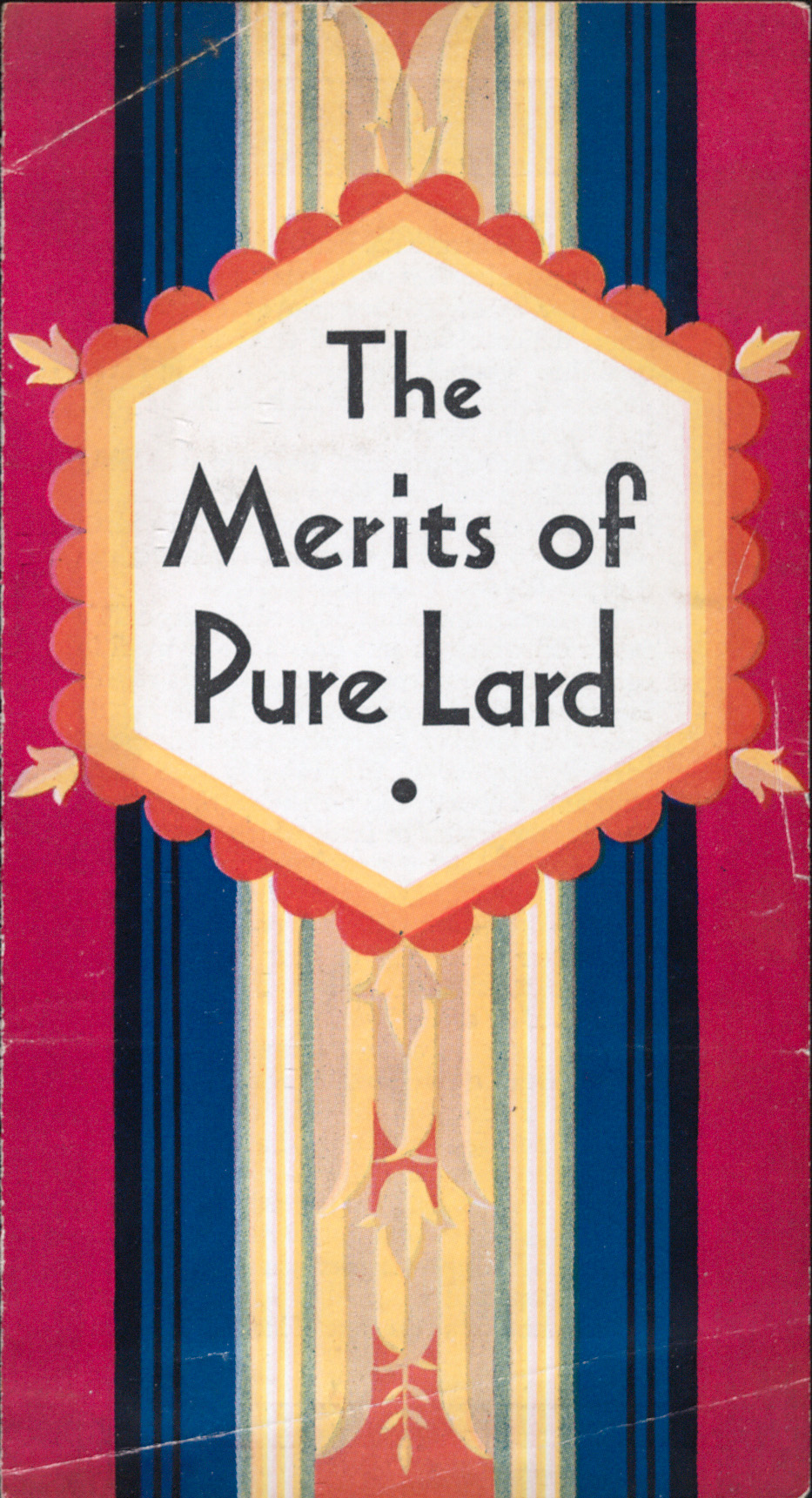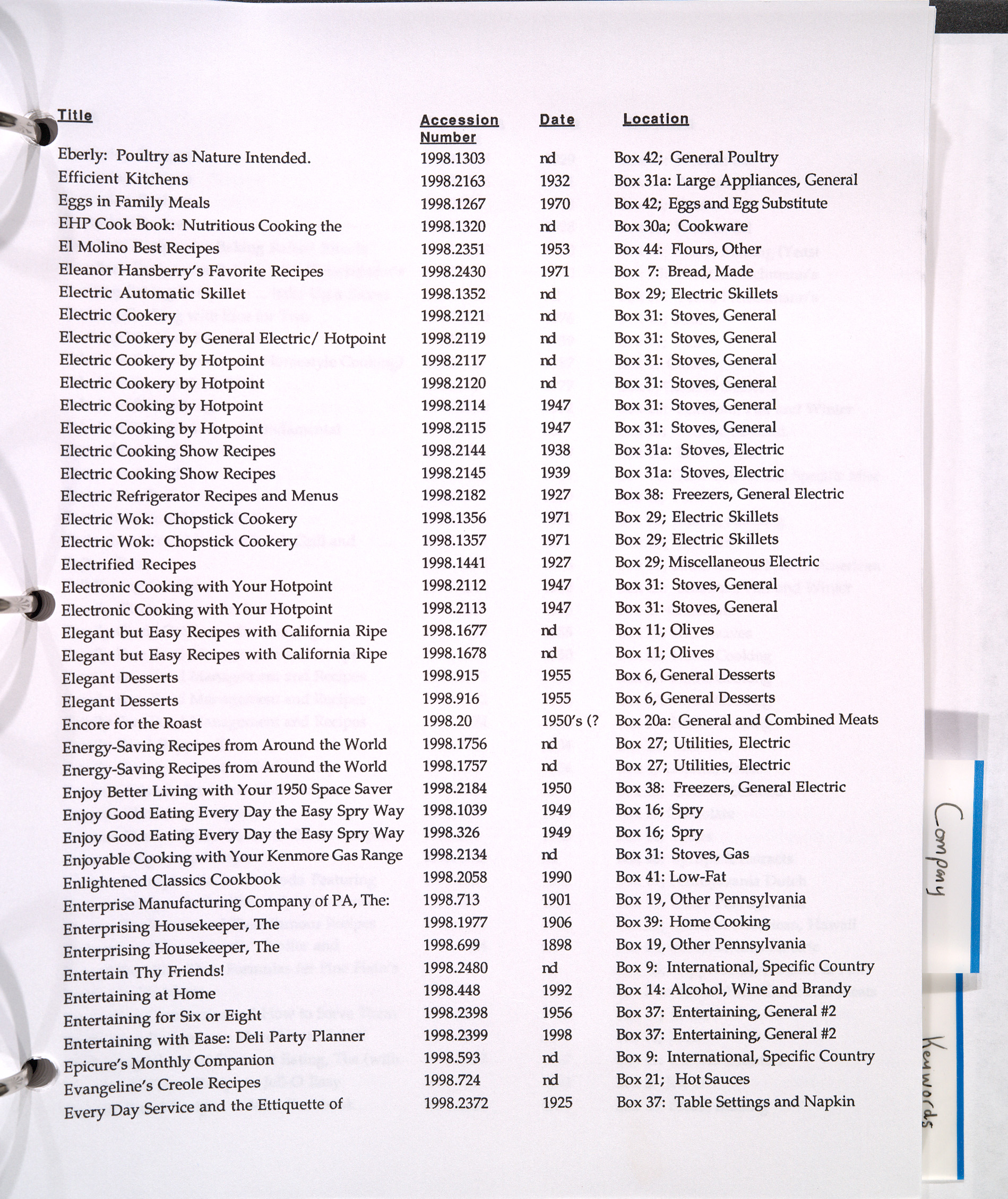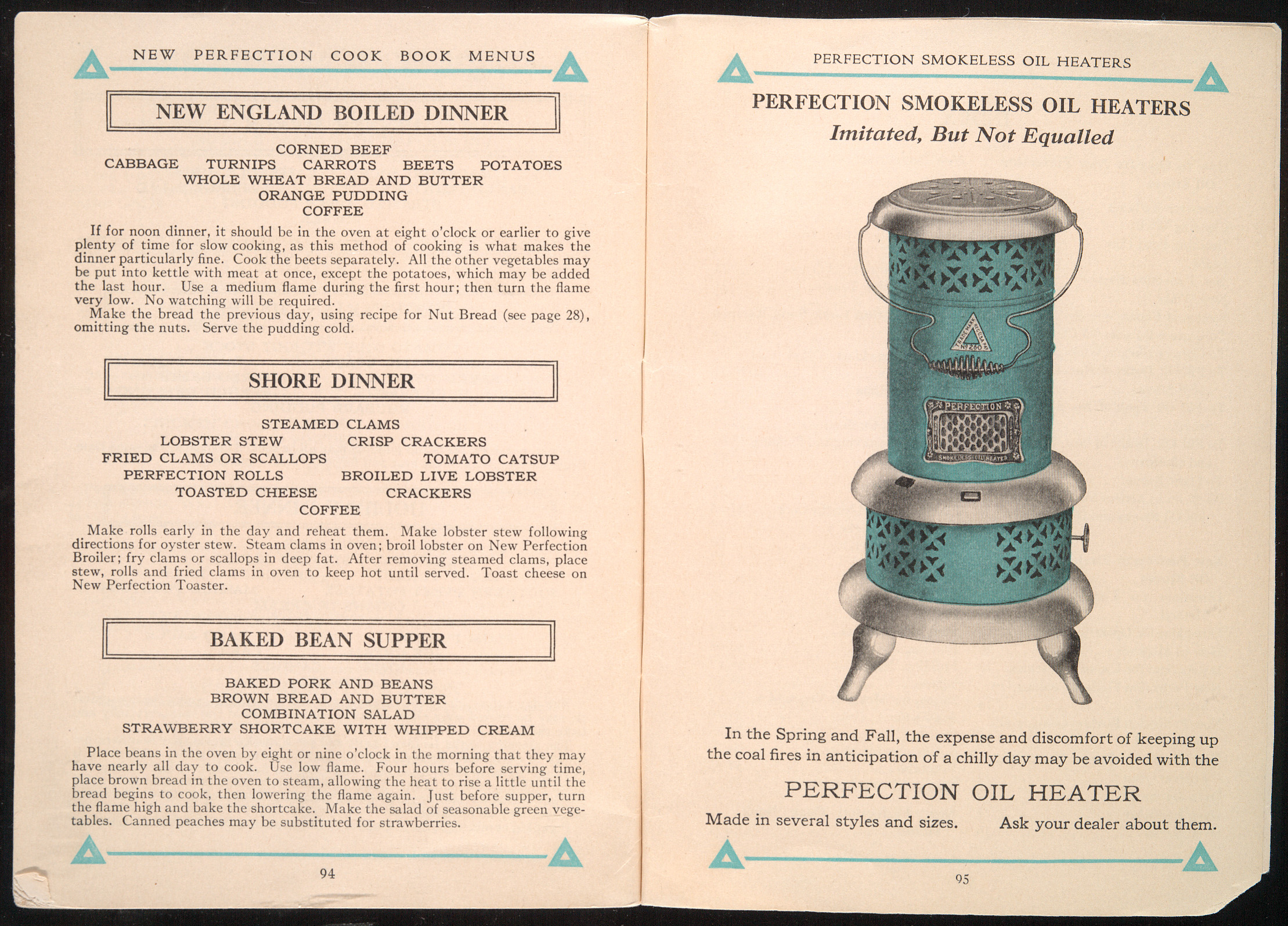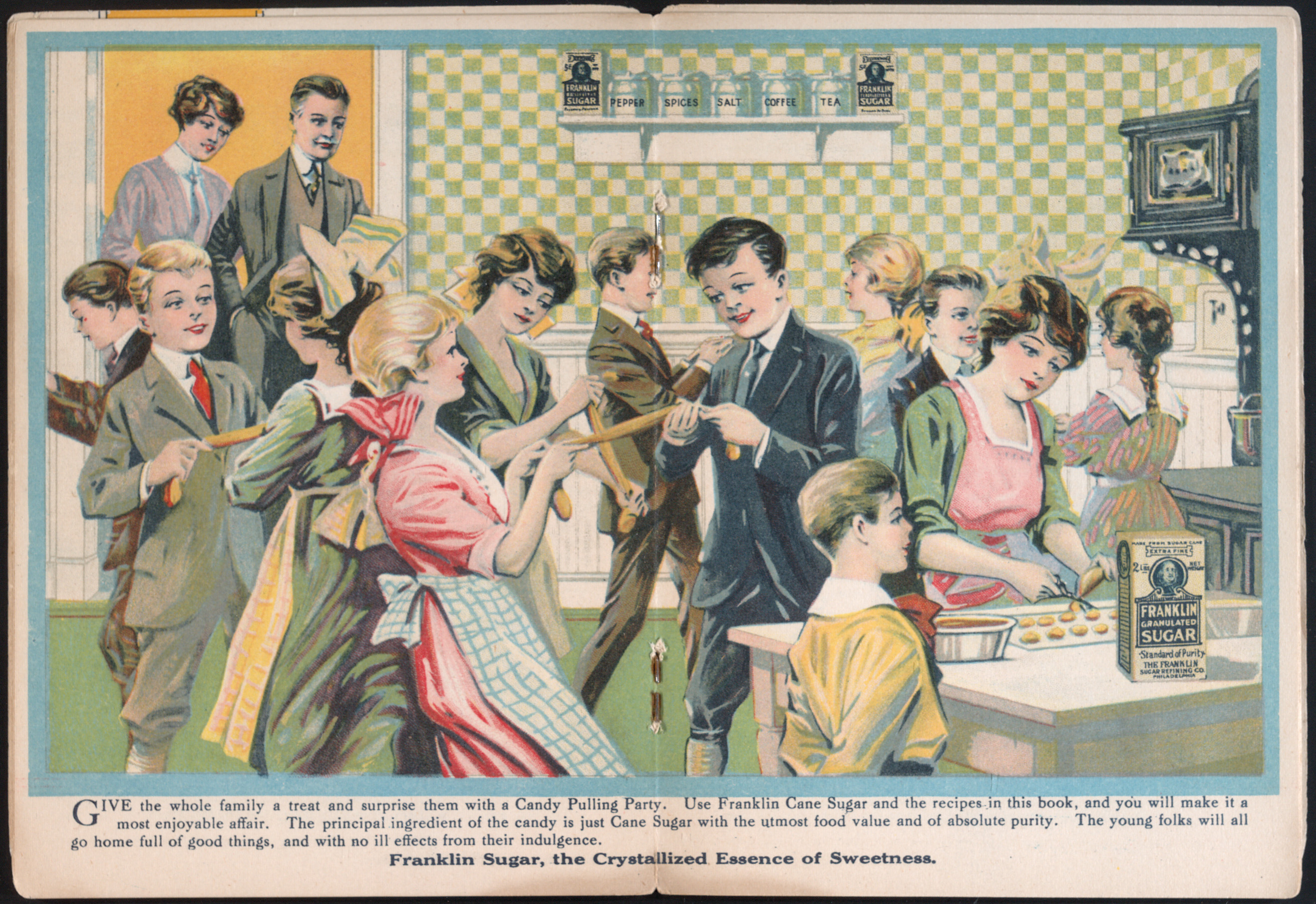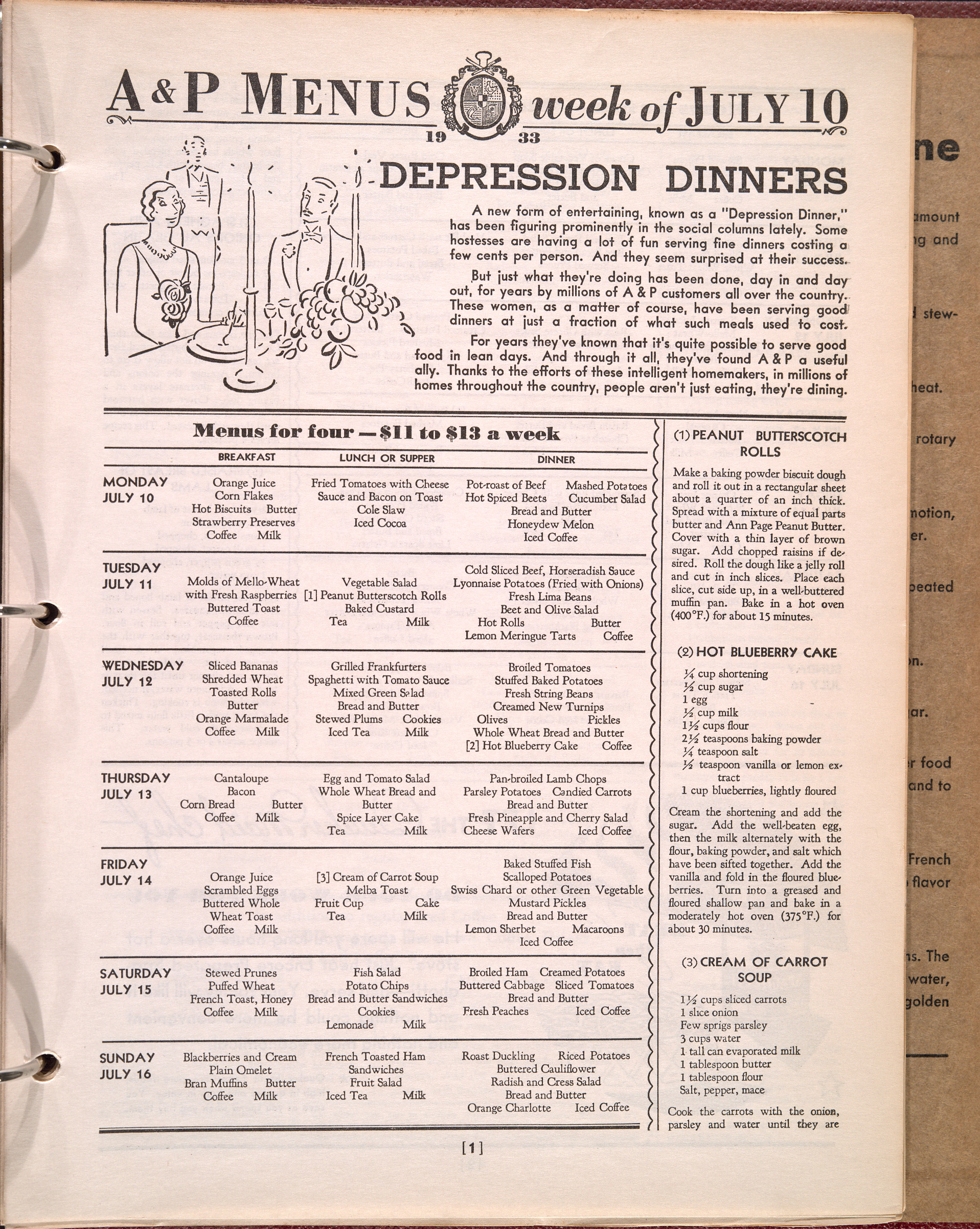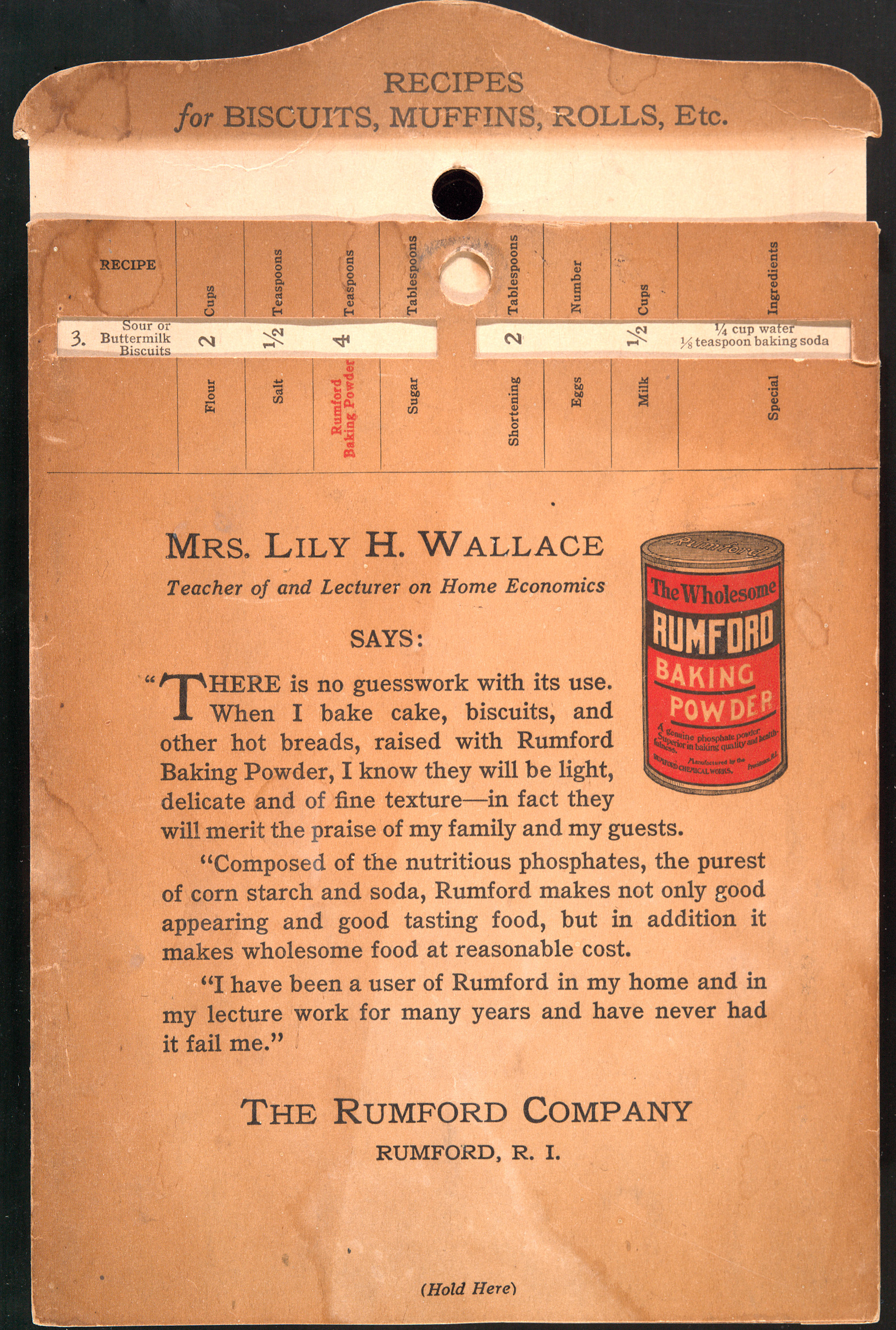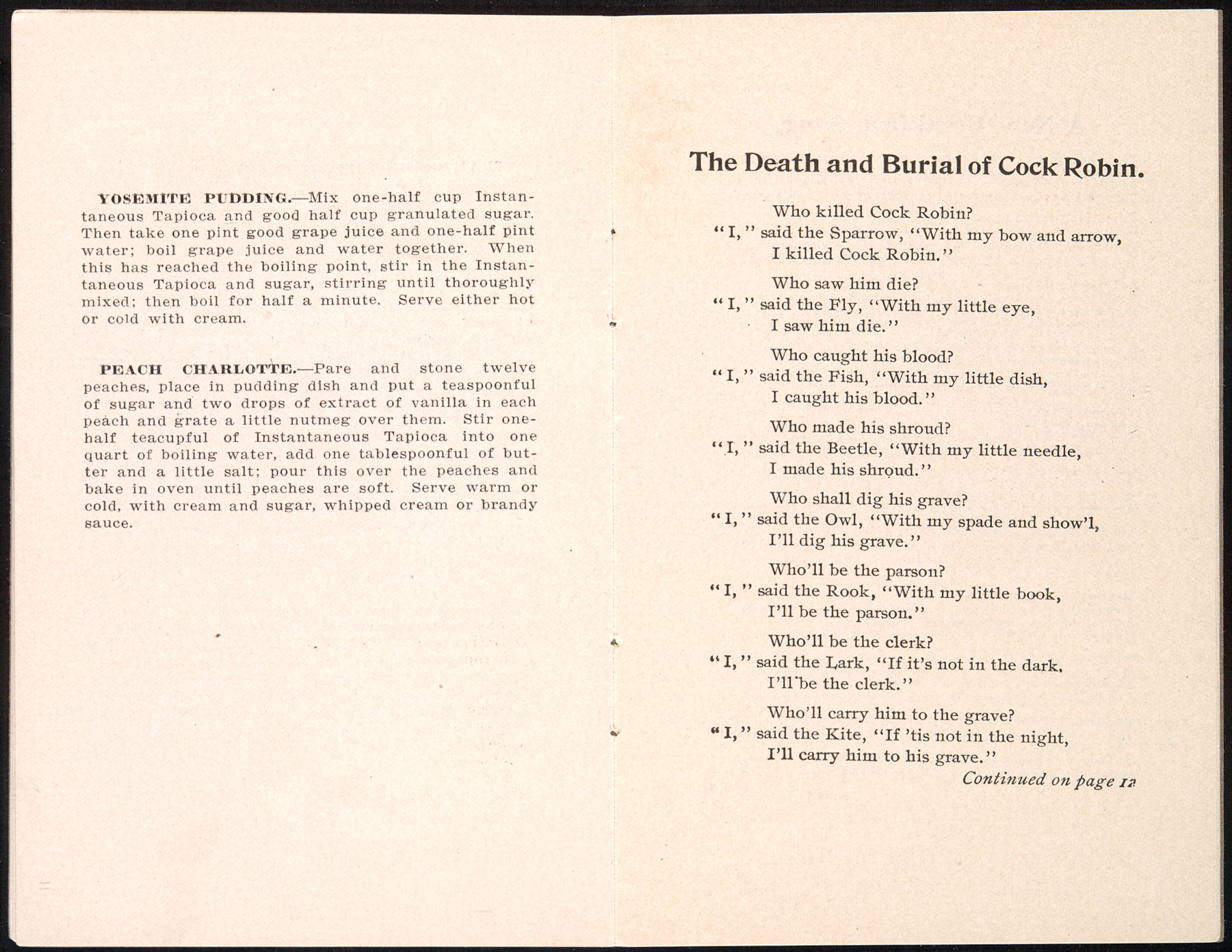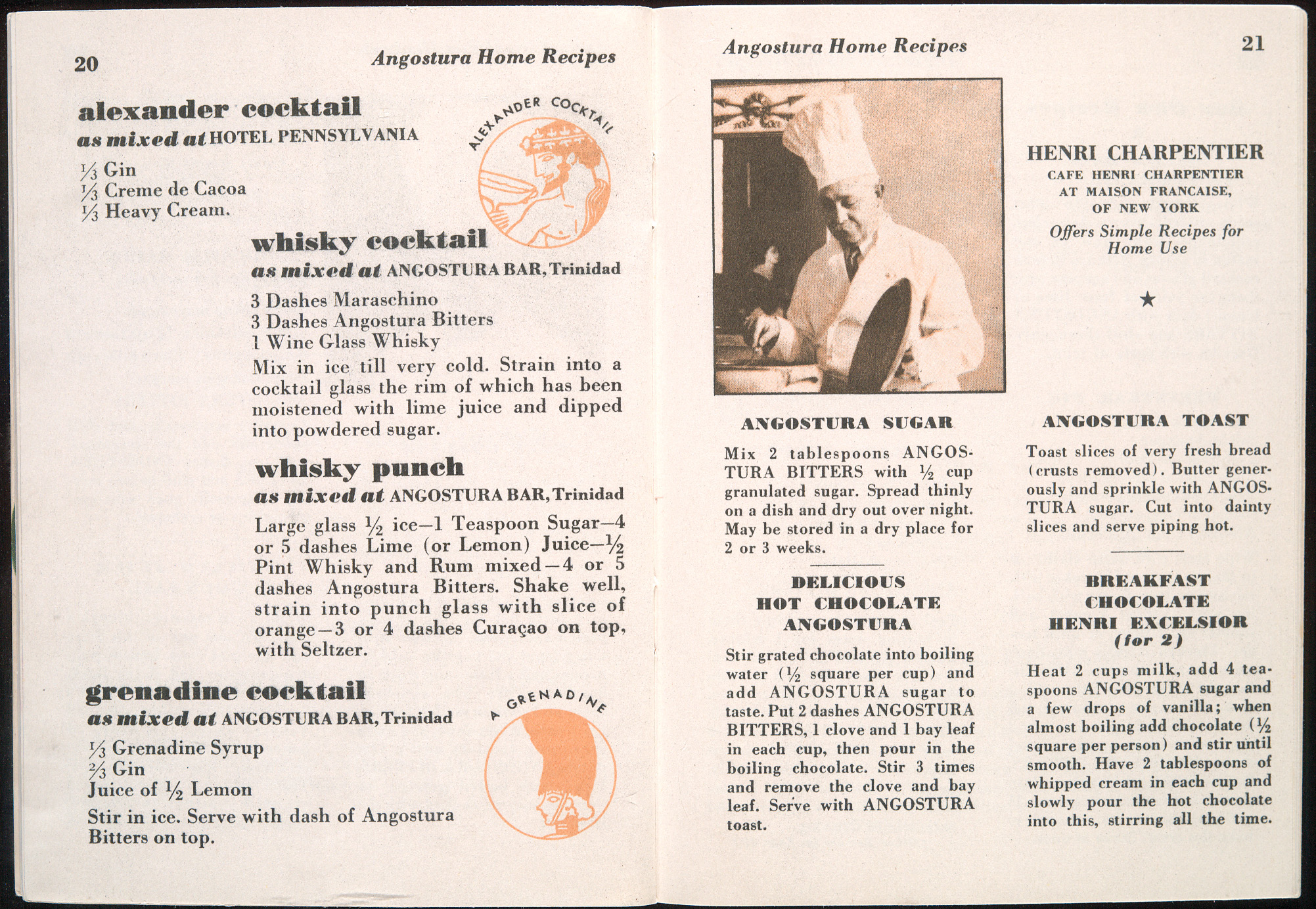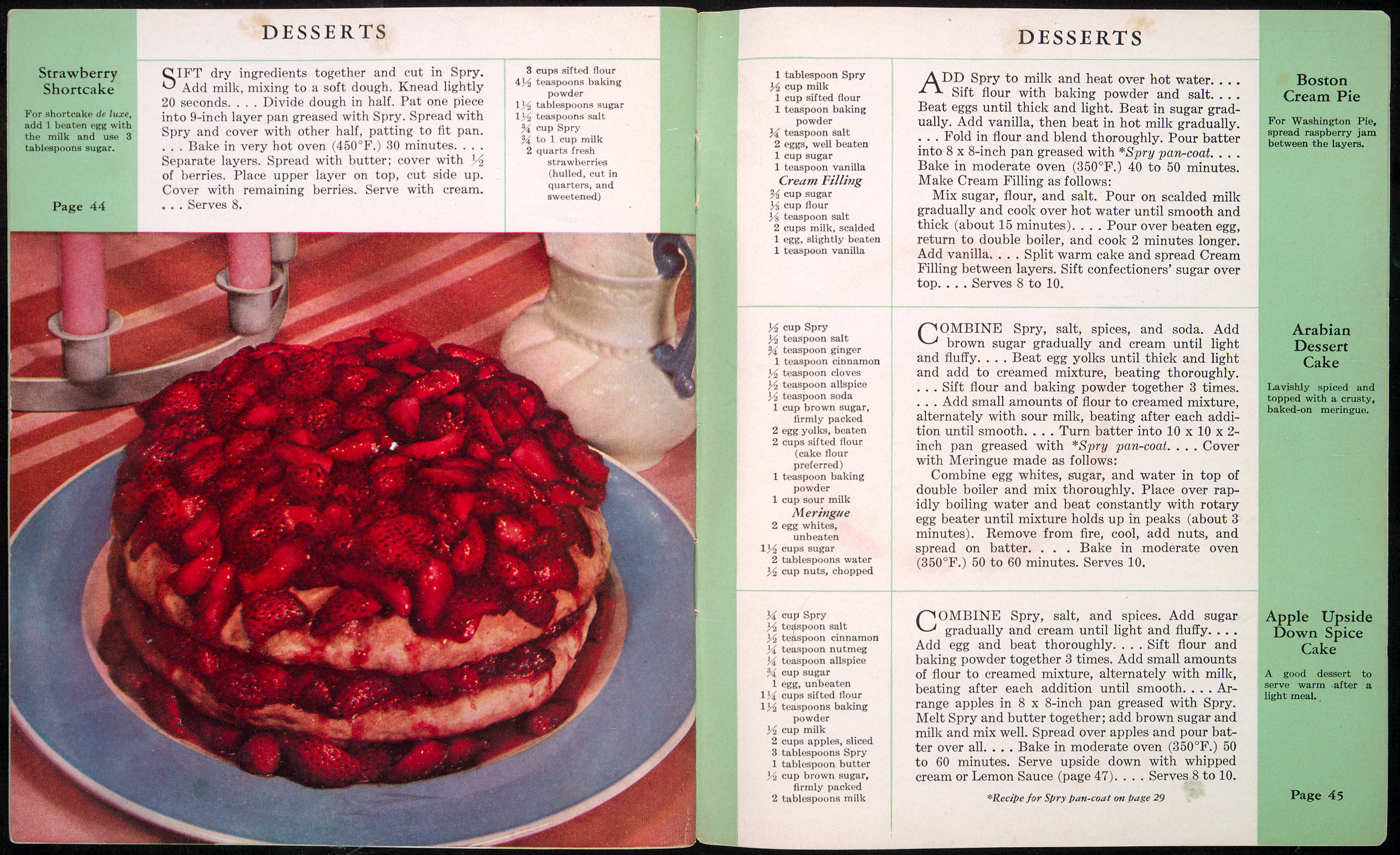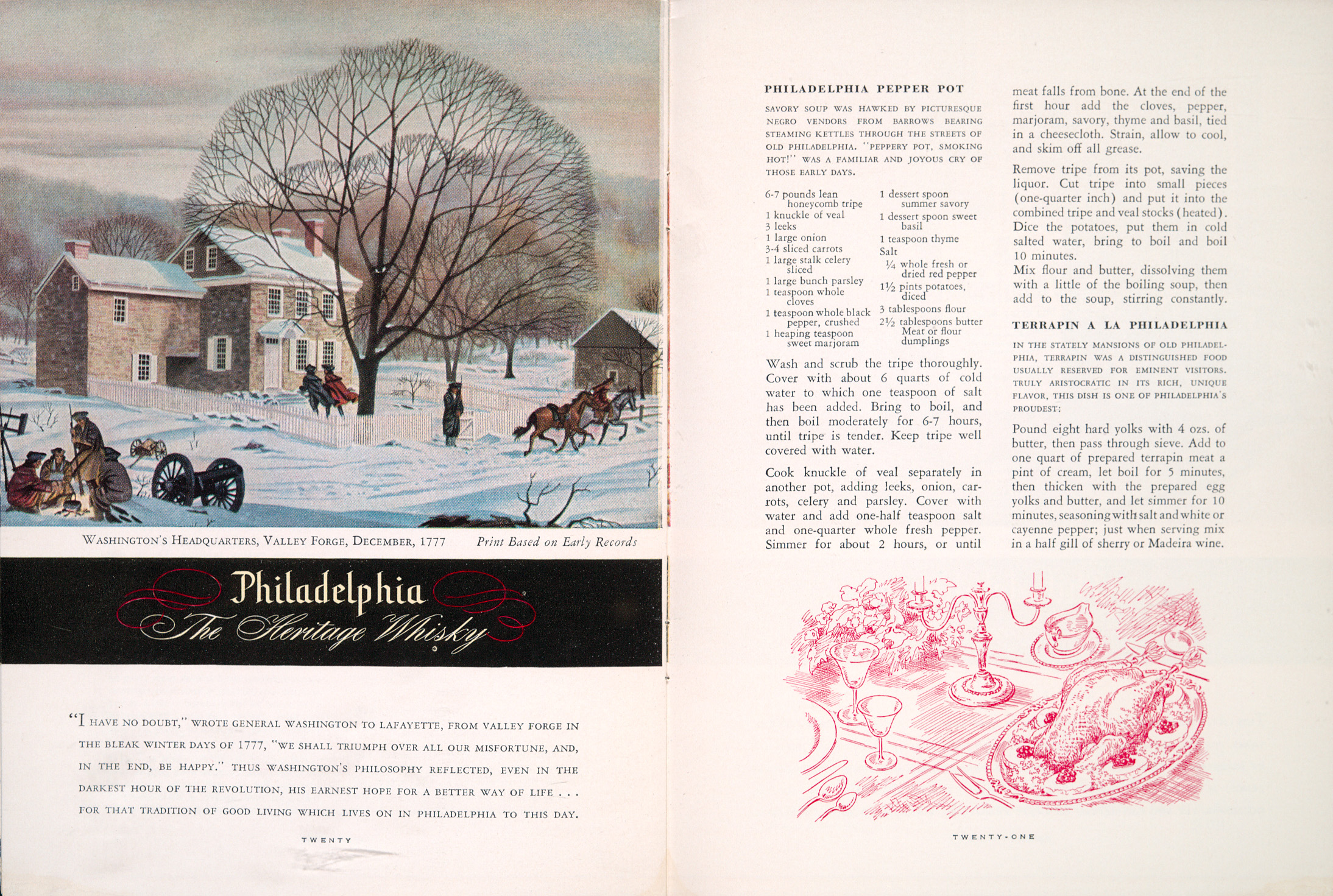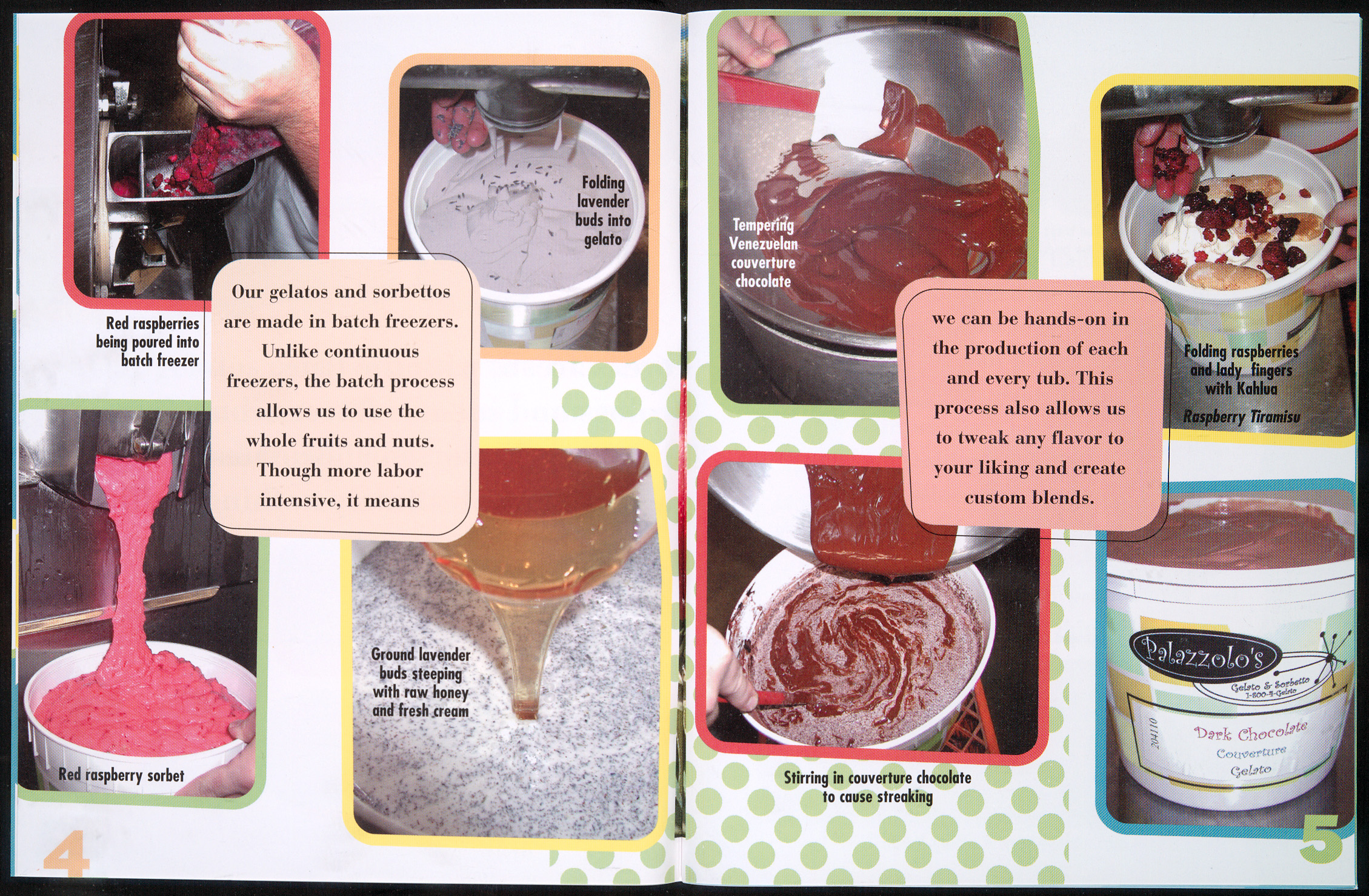Over the past thirty years, Chef Fritz has amassed a collection of over 3,000 recipe booklets from churches, utility companies, social groups and manufacturers. Among collectors, the booklets’ vibrant and sometimes kitschy illustrations are strong attractions. Despite the pamphlets’ lowbrow reputations among some culinary scholars, Blank dotes on these pamphlets for their
… Representation of recipes which, like that of ladies’ journals, culinary magazines, and newspaper features, may be one of the best historical sources of information about what American families actually cooked and ate.
Blank calls the collection Victus Populi (Food of the People) because, since the late 18th century, pamphlets like these have taught American homemakers how and what to cook. As promotional items and product premiums, they were not heirlooms, but kitchen tools.
|
|
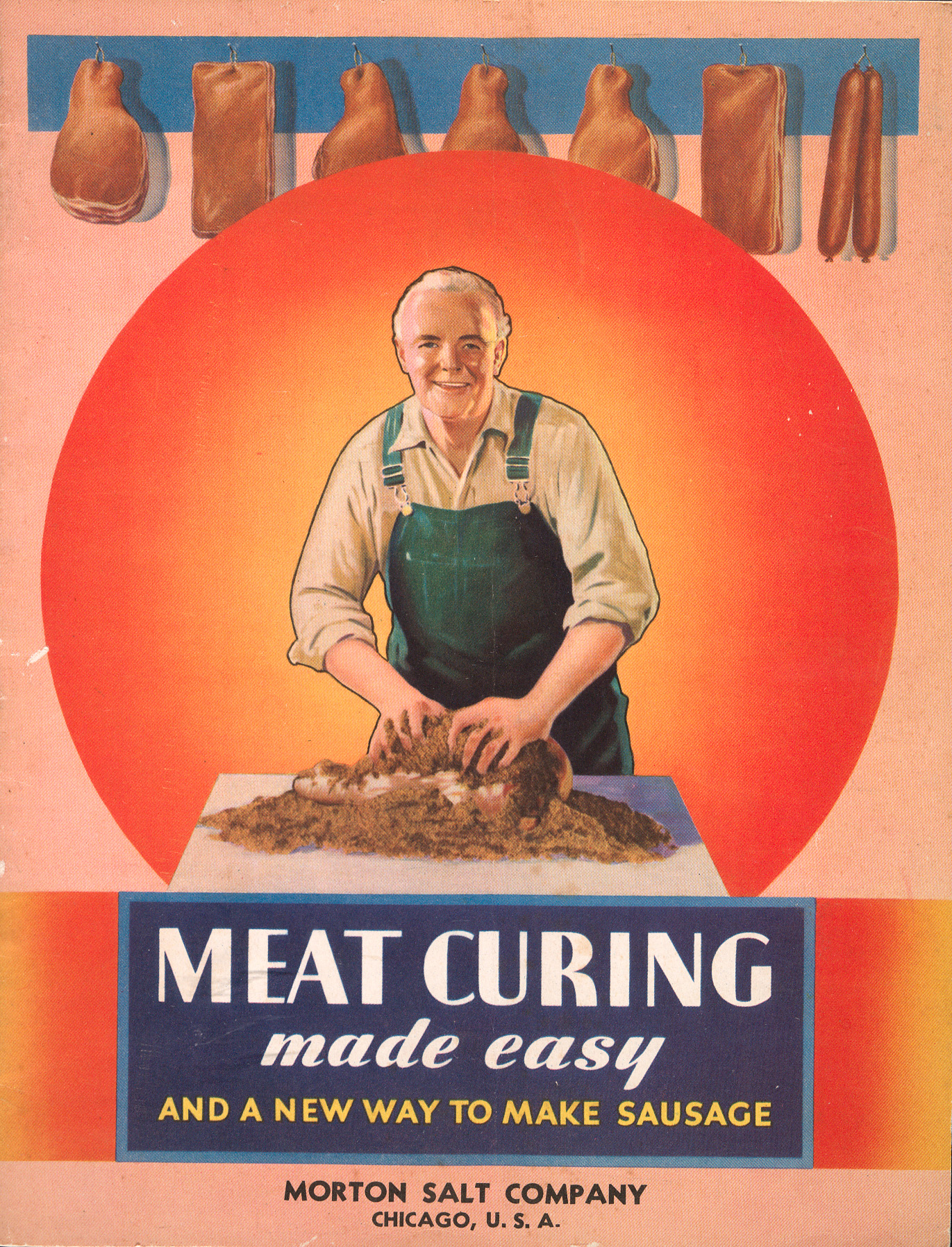 |
|
|
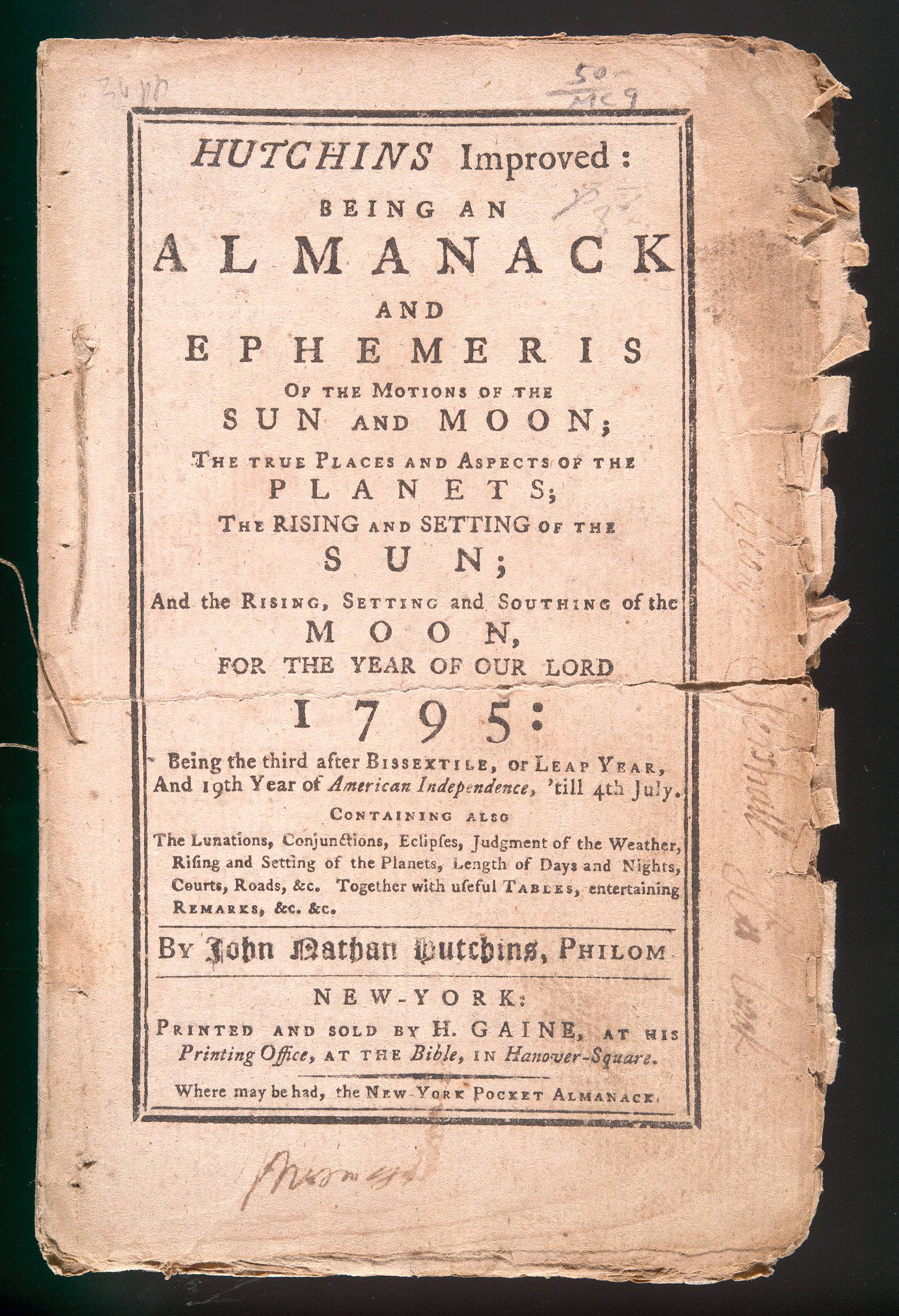
Hutchins’ Almanack and
Ephemeris.
New York: H. Gaine, 1795.
Indeed, some booklets in the collection—worn, torn and spattered with ancient ingredients—were obviously used by home cooks aspiring to become patriotic consumers, sophisticated party-throwers, and frugal but skilled home cooks. Booklets instructed readers on using honey and molasses instead of scarce cane sugar during two world wars, laying elegant spreads with canned California olives and iced celery, molding swank gelatin salads, mixing cocktails and placing silverware correctly.
“Take some goat’s flesh, chop it up small and boil it to a strong jelly…” begins a recipe from the young American republic in Victus Populi’s oldest of pamphlets. A typical almanac of its time, Hutchins’ is filled with recipes, practical information and philosophical advice, including dates of eclipses and circuit court days, months in the new French calendar and the “mental and personal qualifications of a wife.”
Oil, gas, and electric stoves, electric skillets, bottled sodas, blenders, crock pots, Le Creuset cookware, canned soup and home freezers were all once innovations whose potentials lay unsuspected by home makers. Manufacturers promoted unfamiliar new appliances and foods by using recipe booklets to assuage housewives’ fear of frying, baking and blending. Mercantile messages get pounded home in pamphlets like How Famous Chefs Use Campfire Marshmallows and Pet Recipes (which, disappointingly, contains nothing more startling than recipes using evaporated milk).
Because the pamphlets were designed to sell products and not merely to educate, the collection occasionally strikes some odd chords. Do famous chefs really use Campfire marshmallows? Is potato chip salad the most expeditious route to impressing important company? Blank doesn’t let these suspect oddities cast doubt on pamphlets as a whole:
I use Victus Populi all the time. Corporate history, advertising history, regional dishes, failed products, the enduring favorites: these booklets have it all, and together they reveal a heritage of American cooking often better than any cookbook can. Most of their recipes smack of homemade goodness and translate well into contemporary kitchens of the third millennium. After all, would a peanut butter manufacturer publish recipes for peanut butter cookies that taste awful or are hard to make?
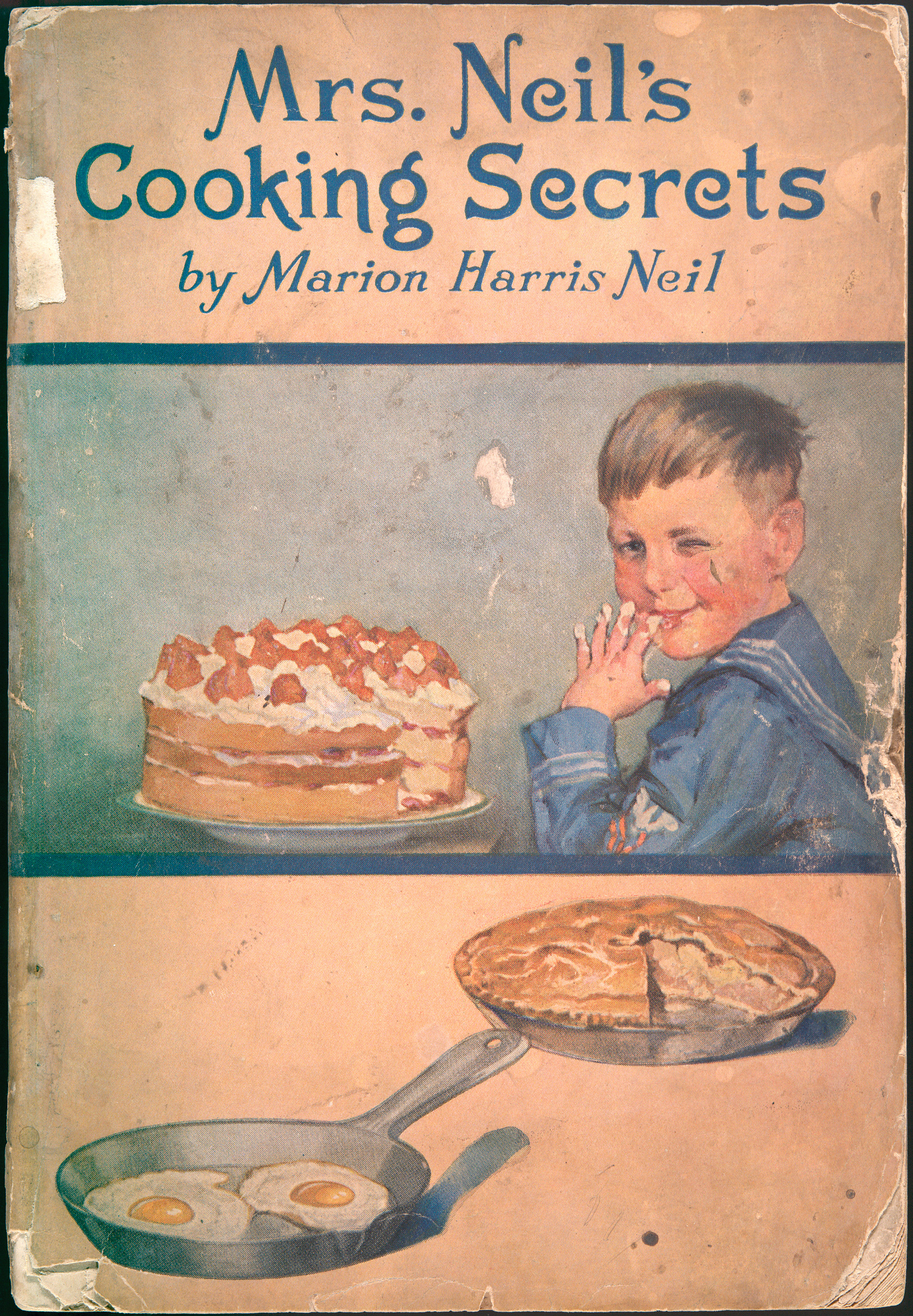 |
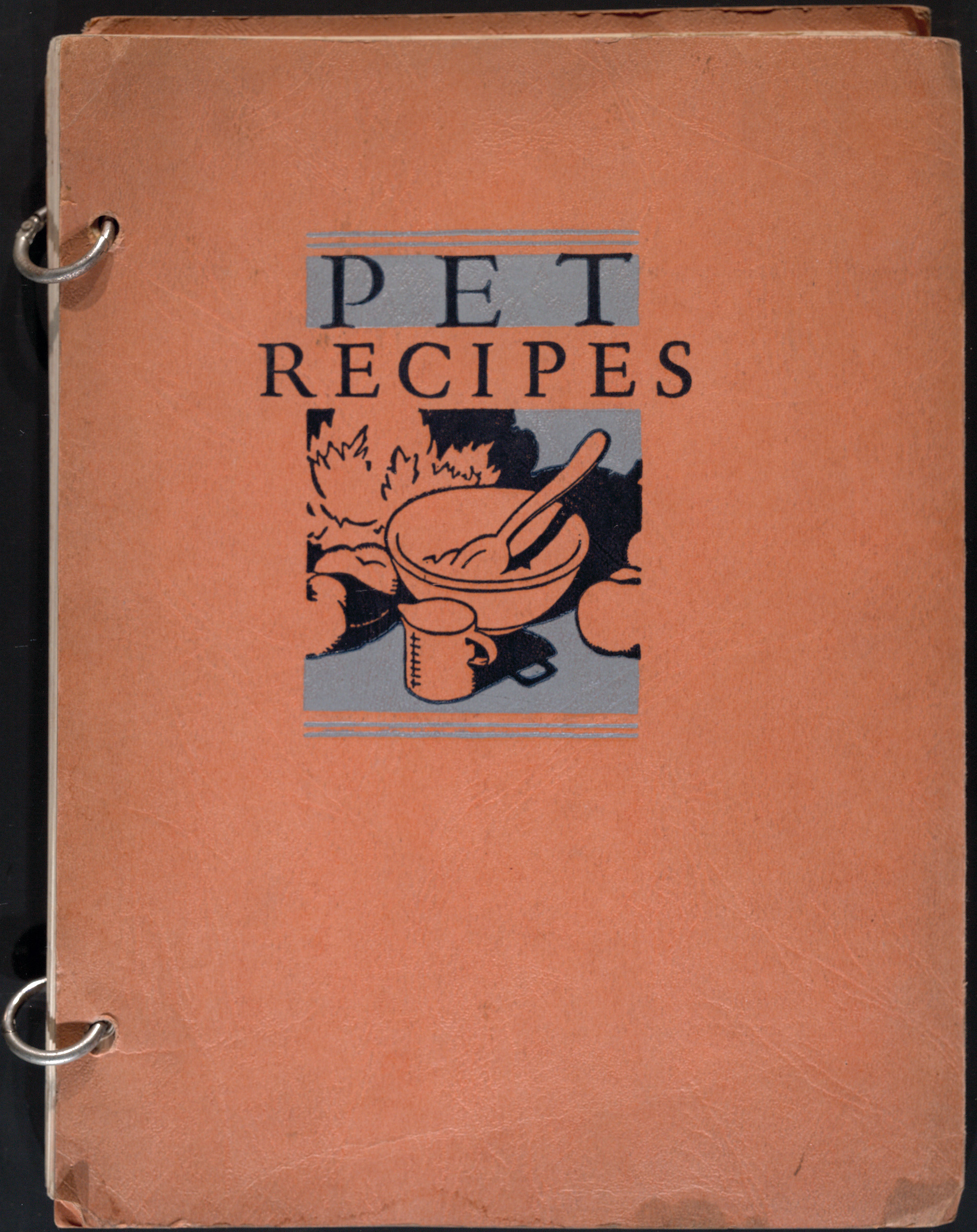 |
 |
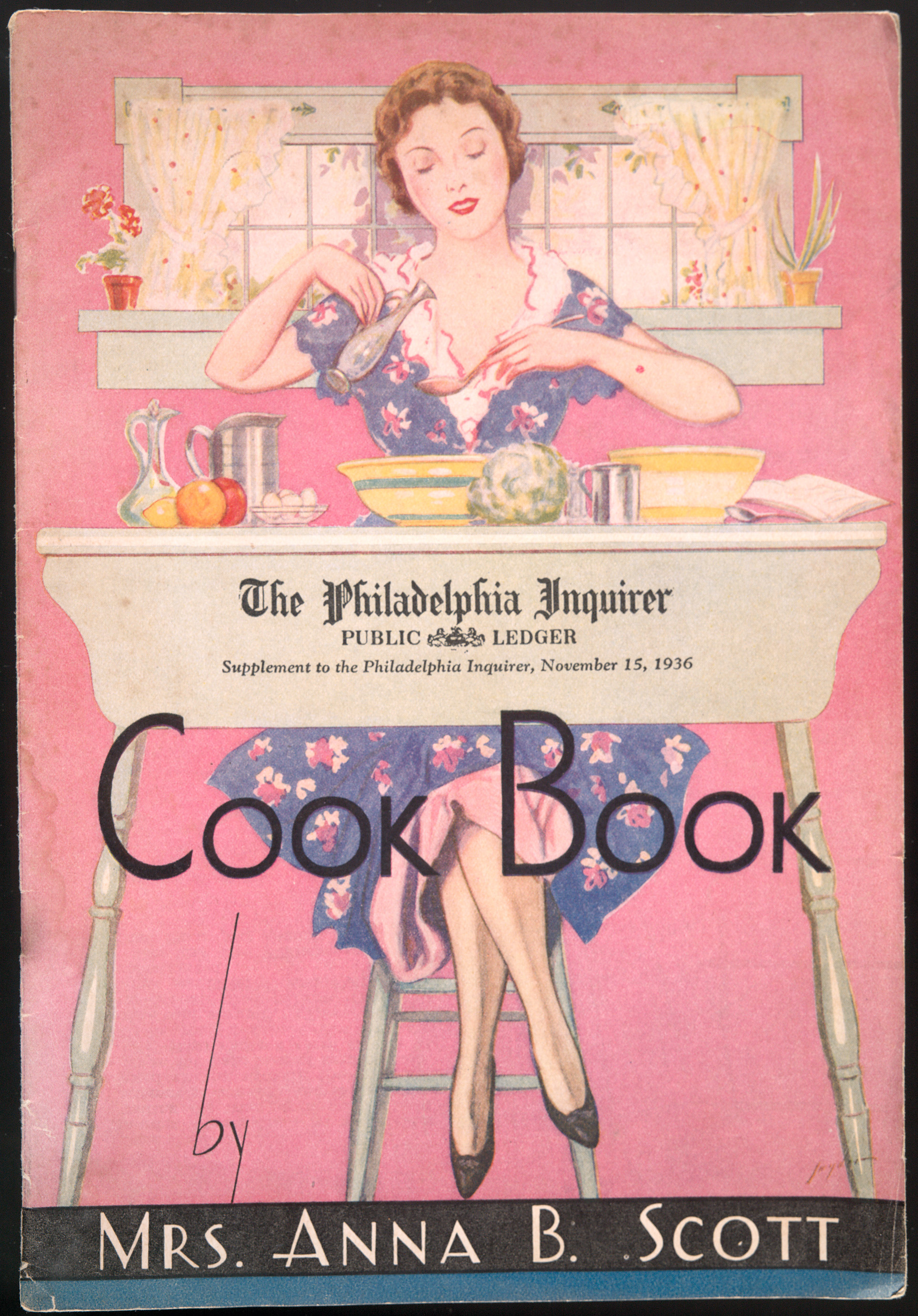 |
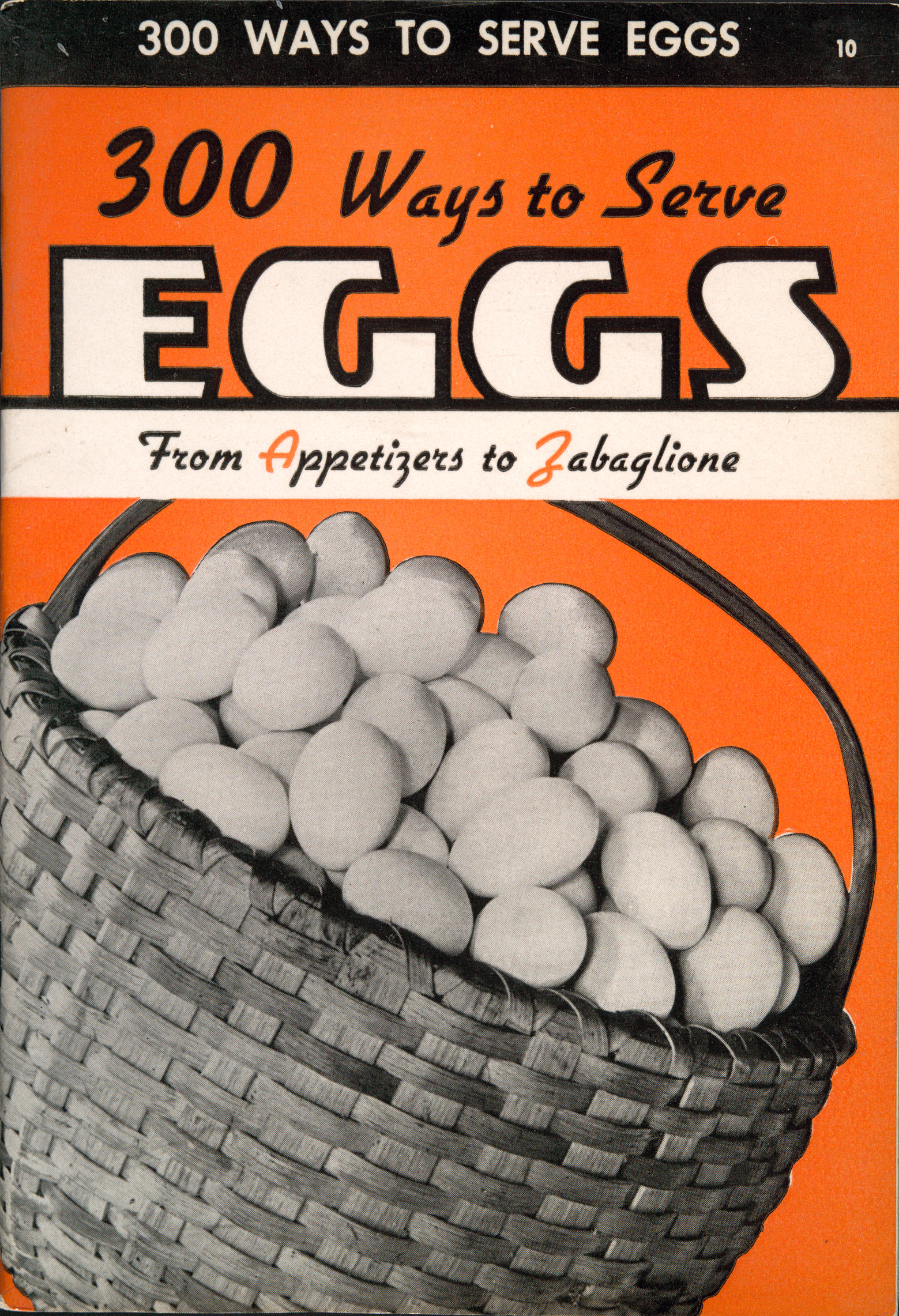 |
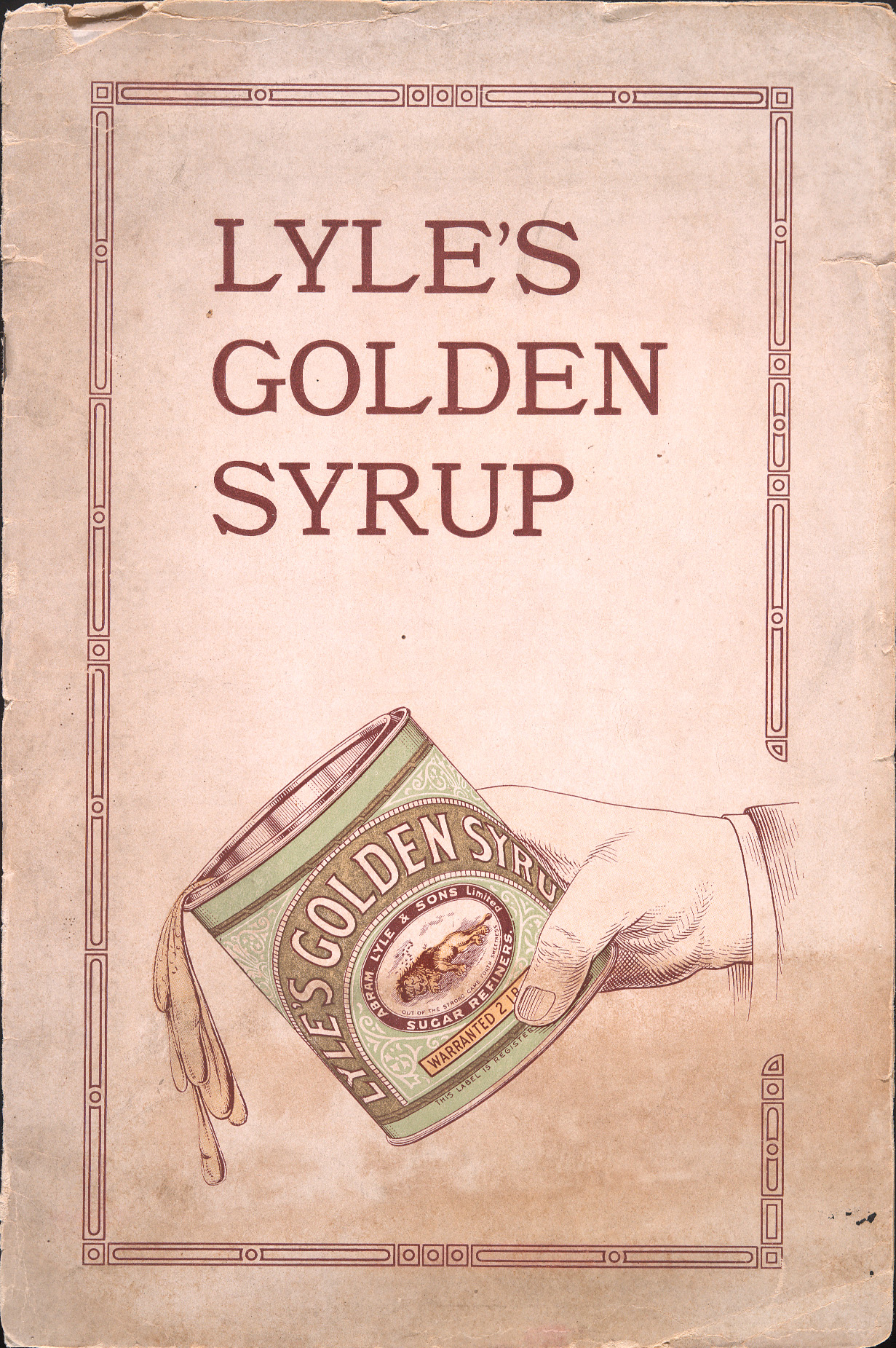 |
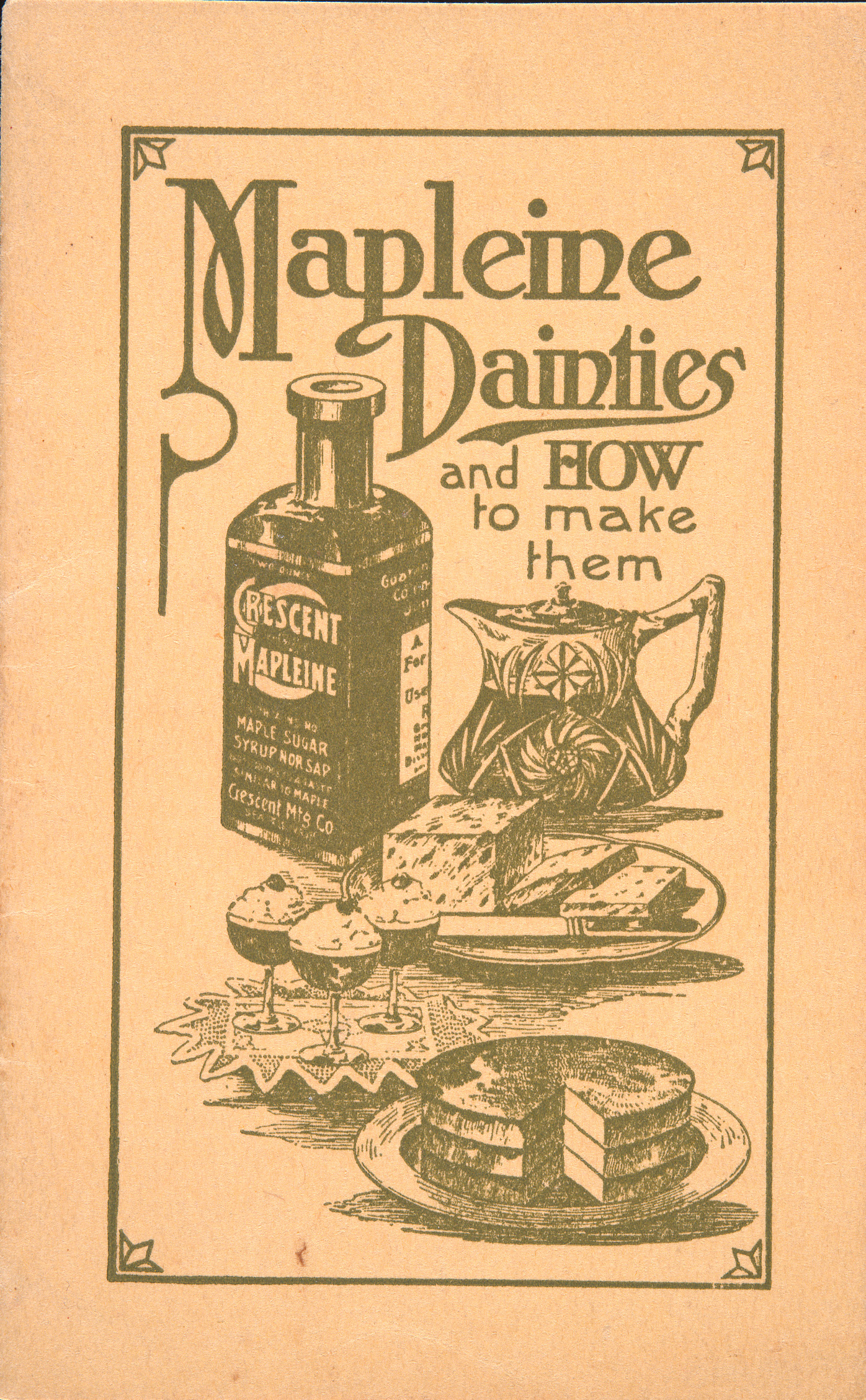 |
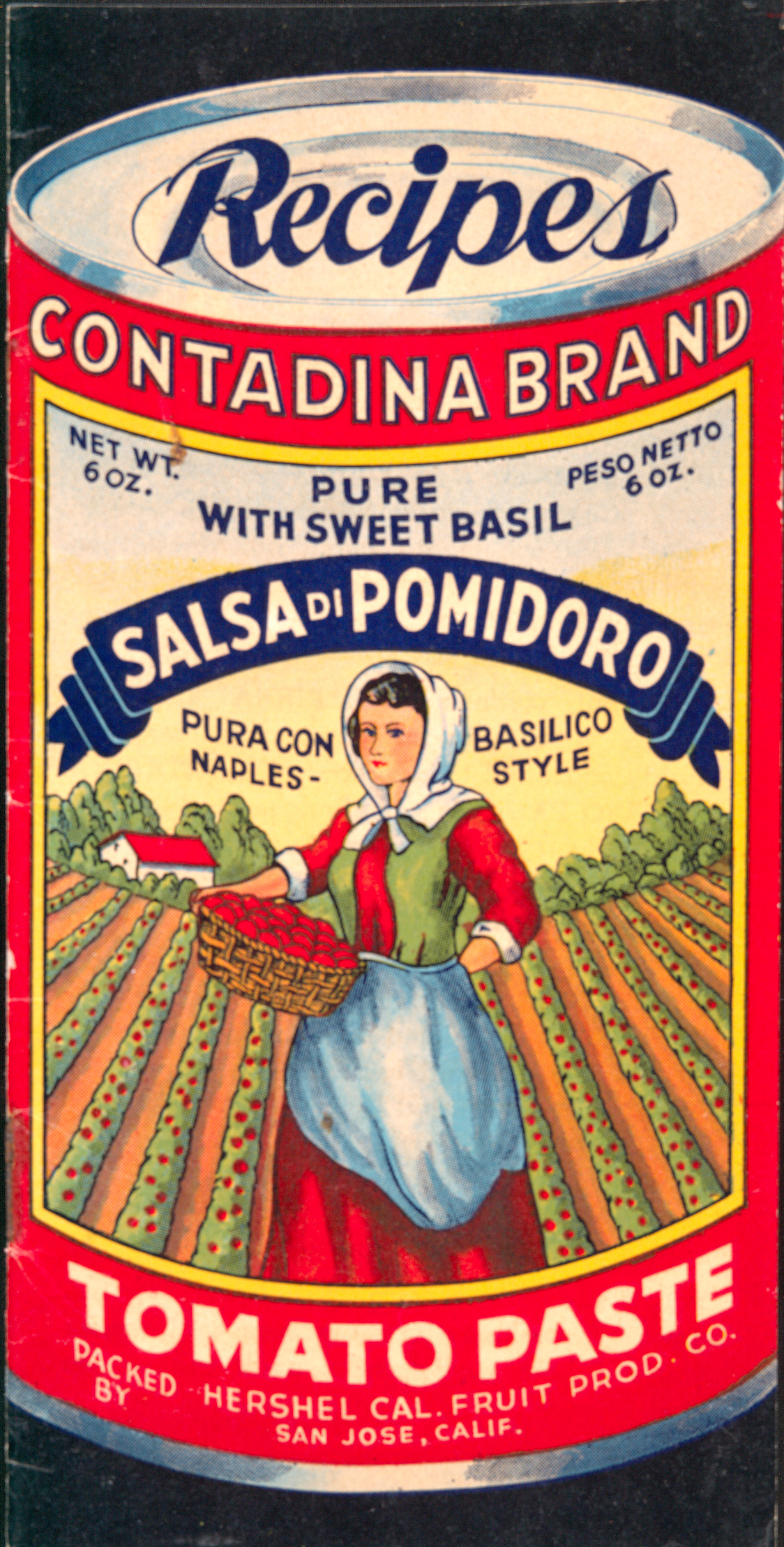 |
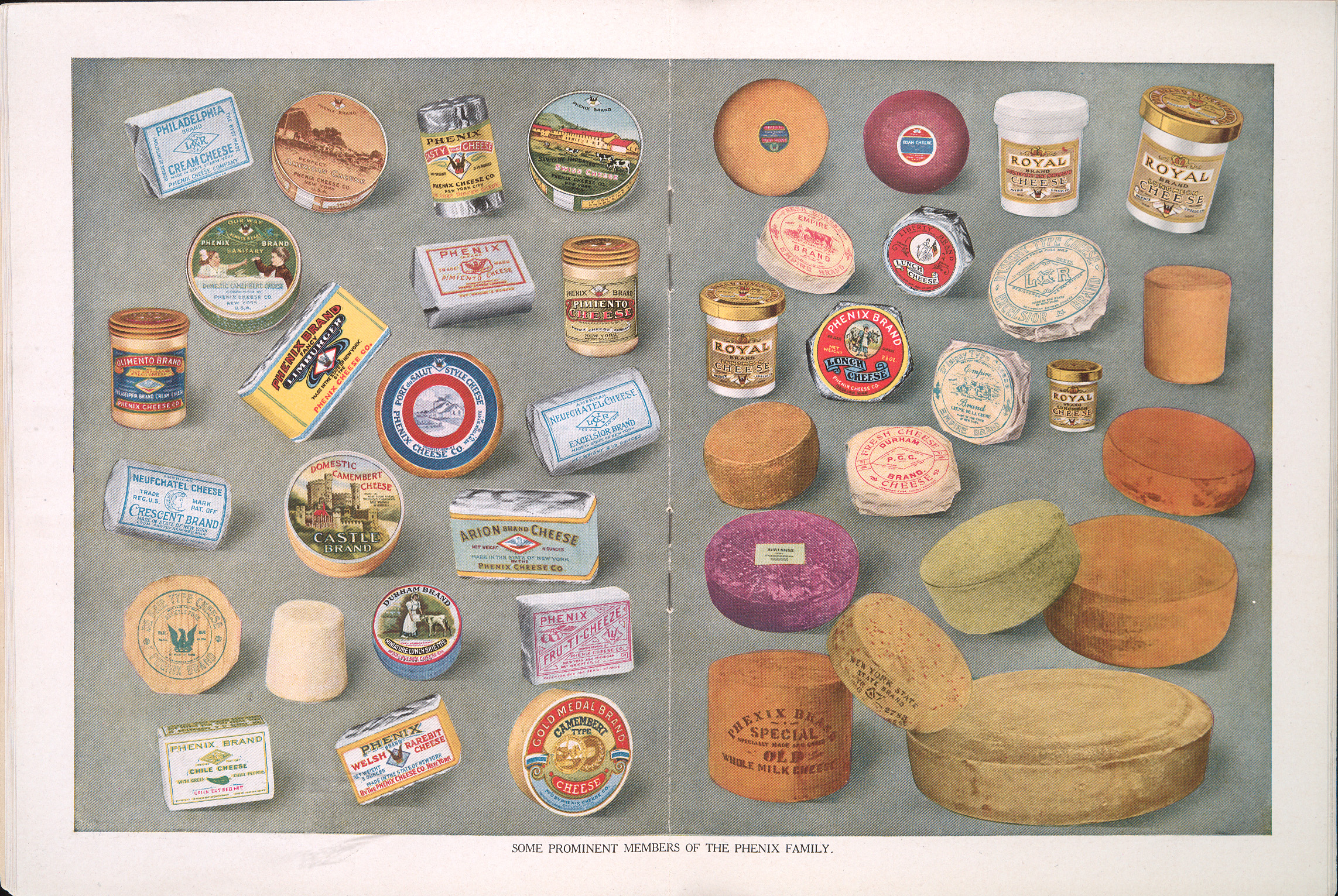 |
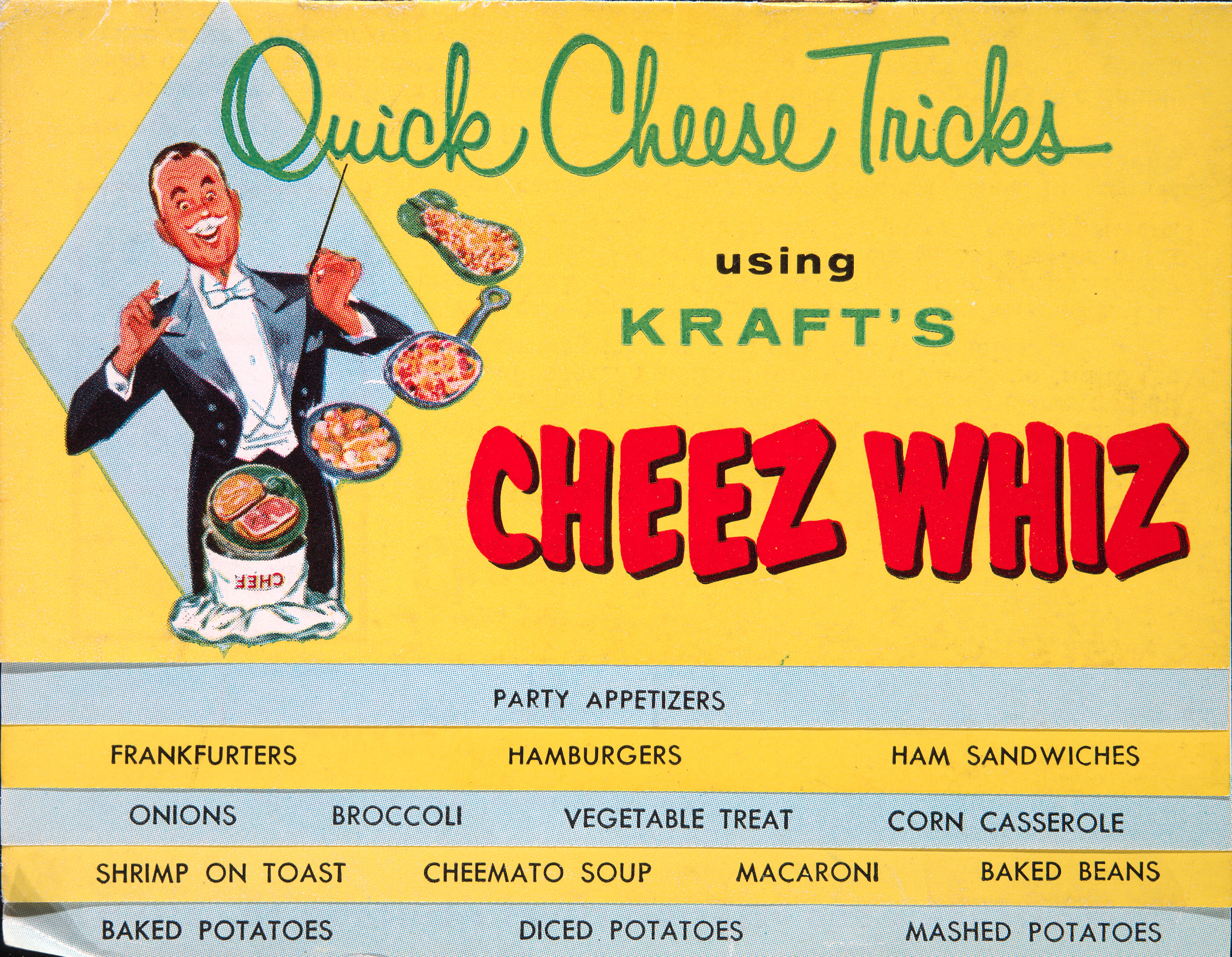 |
